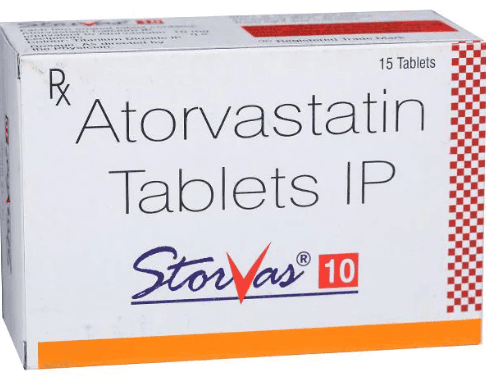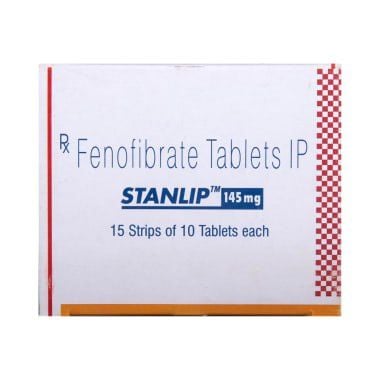This is an automatically translated article.
Fenbrat 100 belongs to the group of drugs to reduce blood fat, is indicated for the treatment of hypercholesterolemia and endogenous hypertriglyceridemia in adults, in combination with an appropriate diet and exercise. To ensure the effectiveness of treatment and avoid side effects, patients need to take the drug exactly as directed by the doctor, professional pharmacist.
1. What is Fenbrat 100?
Fenbrat 100 with the main ingredient is Fenofibrate 100 mg and other excipients just enough for 1 pill. Fenofibrate is a prodrug of Fenofibric acid, which has the effect of reducing the concentration of bad cholesterol in the blood, especially the effect of reducing mainly the concentration of Triglyceride. Fenofibrate in Fenbrat 100 can reduce triglyceride levels by 40-50%, reduce bad cholesterol (LDL-Cholesterol) by 20-25% and increase good cholesterol (HDL-cholesterol) by 20-60% . The mechanism of cholesterol reduction is due to the reduction of low-density lipoproteins (VLDL and LDL), thereby reducing the concentration of total blood cholesterol.
In addition, studies have shown that Fenbrat 100 also has an antiplatelet effect. Fenbrat 100 is rapidly absorbed when taken with food, reaching peak blood concentrations 4 hours after oral administration. The drug is then eliminated mainly by the kidneys in the form of conjugates.
2. Indications of Fenbrat 100
Fenbrat 100 is indicated for treatment in cases of hypercholesterolemia that have been applied with diet and exercise but have not responded, specifically:
Raised LDL - blood cholesterol alone. Isolated endogenous hypertriglyceridemia. Combined hypercholesterolemia (LDL-Cholesterol and Triglyceride). Hyperlipoproteinemia secondary to diabetes, hypothyroidism,... It should be noted: During the use of the drug, the patient still follows the previous diet and exercise regimen.
3. Contraindications of Fenbrat 100
Do not use Fenbrat 100 in the following cases:
Allergy to Fenofibrate ingredient or to any of its ingredients. Patients with severe renal impairment glomerular filtration rate <60ml/min. Patients with elevated liver enzymes, liver dysfunction, gallbladder diseases, pancreatitis. Do not use in pediatric patients under 10 years of age. The drug crosses the placenta and breast milk, so it is contraindicated in pregnant and lactating women. The patient has a history of allergic reactions to light during treatment with fibrates or with non-steroidal anti-inflammatory drugs.
4. Notes when using Fenbrat 100
During the use of Fenbrat 100, patients should note the following:
Check and monitor liver and kidney function before and during drug treatment. Discontinue use when liver enzymes (SGOT, SGPT) are greater than 3 times normal values. After 3 to 6 months of treatment, if there is no effect, it must be supplemented or replaced with another treatment method. If you are being treated with anticoagulants, you should monitor hematological parameters and adjust the dose accordingly as directed by your doctor. Patients with hypothyroidism may cause muscle side effects when using Fenbrat 100. Treat the cause of secondary dyslipidemia (diabetes, hypothyroidism, nephrotic syndrome,...) before using Fenbrat. 100.
5. Fenbrat 100 . Drug Interactions
During the use of Fenbrat 100, some drug interactions may occur as follows:
Fenbrat 100 in combination with Perhexiline can cause acute hepatitis with a risk of death. Fenbrat 100 enhances the effect of anticoagulants. Concomitant use of Fenbrat 100 with other lipid-lowering drugs (pravastatin, simvastatin,...) may increase the risk of muscle damage and acute pancreatitis. Cyclosporin may increase the risk of muscle damage when used with Fenbrat 100.
6. Dosage and how to use Fenbrat 100
Fenbrat 100 is made in the form of film-coated tablets that should be taken orally, patients should take the drug with the main meal, not on an empty stomach.
Patients should note, coordinate with a reasonable diet and exercise when taking the drug.
Dosage of Fenbrat 100
Adults: 1 tablet (100mg) x 3 times/day. Children over 10 years old: maximum dose of 5 mg/kg/day.
7. Side effects of Fenbrat 100
Possible undesirable effects when using Fenbrat 100 are recorded as follows:
Common
Gastrointestinal disorders, indigestion, epigastric pain, nausea , diarrhea. Allergic skin reactions, erythema, urticaria, nonspecific rash. Increased liver enzymes (SGOT, SGPT, transaminase). Muscle pain, muscle wasting. Rare
Gallstones . Impotence, decreased sex drive, decreased sperm count. Decreased white blood cell lines. In summary, Fenbrat 100 is a drug for the treatment of dyslipidemia, with the predominant reduction effect in hypertriglyceridemia. Drug treatment must be combined with an appropriate diet and exercise regimen. Accordingly, to ensure the effectiveness of treatment and avoid unwanted side effects, patients need to strictly follow the instructions of the doctor, professional pharmacist.
Follow Vinmec International General Hospital website to get more health, nutrition and beauty information to protect the health of yourself and your loved ones in your family.
Please dial HOTLINE for more information or register for an appointment HERE. Download MyVinmec app to make appointments faster and to manage your bookings easily.













